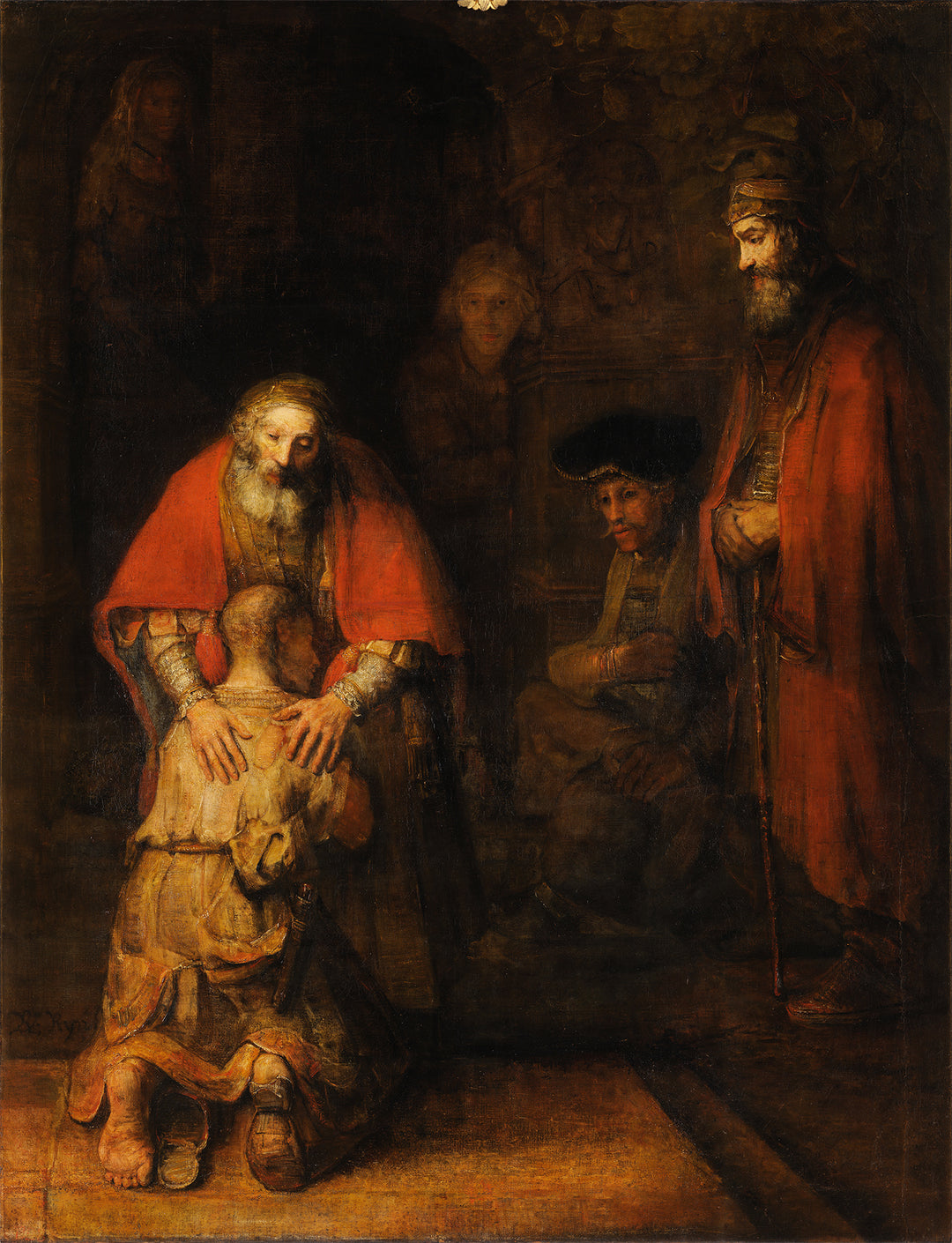
The Return of the Prodigal Son - Rembrandt
- Oil painting on canvas
- 100% Hand-painted
- View quality of this painting
- Shipping
- Return Guarantee
| Author: | Rembrandt Harmenszoon van Rijn |
|---|---|
| Title: | The Return of the Prodigal Son |
| Original location: | Hermitage Museum, Saint Petersburg, Russia |
| Year: | 1661–1669 |
"The Return of the Prodigal Son," painted between 1661 and 1669 by Rembrandt Harmenszoon van Rijn, is a masterpiece of the Baroque period, notable for its profound emotional exploration and mastery of chiaroscuro.
In this painting inspired by "The Parable of the Prodigal Son" from the Gospel of Luke, Rembrandt captures the moment of reconciliation between the father and his repentant son, using light to emphasize the tenderness and forgiveness emanating from the paternal figure. The darkness of the painting envelops almost all the characters on the canvas, creating a parallel with life in the world where forgiveness always has a limit. In contrast, the father and son appear immersed and enveloped in a golden and unparalleled glow that reveals a completely new kind of charity, a charity without limits. This new clarity, full of empathy for the sinner, which is centered on the father's embrace, reflects on the face of an older brother who, with crossed arms, refuses to accept this without the deserved punishment being applied to the criminal. The composition, with its focus on gestures and expressions, reflects the influence of tenebrism and underscores the spiritual introspection that characterizes Rembrandt's late work. The dramatic use of light and shadow not only defines the physical space but also symbolizes the transition from sin to repentance and redemption, recurring themes in Baroque religious painting.
The choice to represent this biblical passage reflects the artist's interest in the human condition, where vulnerability and mercy play central roles. This painting not only influenced his contemporaries but also left a mark on later religious art, highlighting the ability of art to convey the deepest emotions of the human experience.